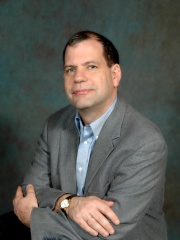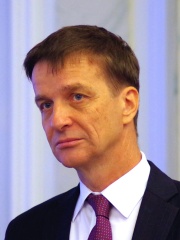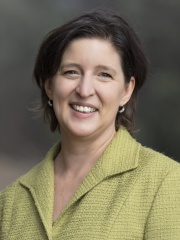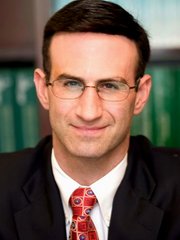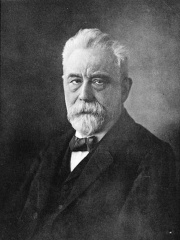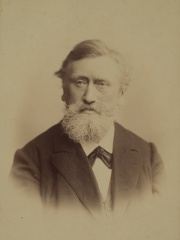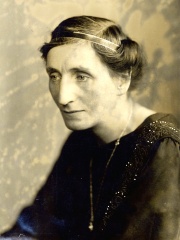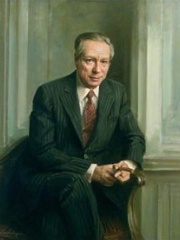ECONOMIST
Robin Hanson
1959 - Today
 Robin Hanson
Robin Hanson
Robin Dale Hanson (born August 28, 1959) is an American economist and author. He is associate professor of economics at George Mason University and a former research associate at the Future of Humanity Institute of Oxford University. Hanson is known for his work on idea futures and markets, and he was involved in the creation of the Foresight Institute's Foresight Exchange and DARPA's FutureMAP project. He invented market scoring rules like LMSR (Logarithmic Market Scoring Rule) used by prediction markets such as Consensus Point (where Hanson is Chief Scientist), and has conducted research on signalling. Read more on Wikipedia
His biography is available in 7 different languages on Wikipedia. Robin Hanson is the 426th most popular economist (down from 415th in 2024), the 7,566th most popular biography from Germany (down from 7,167th in 2019) and the 38th most popular German Economist.
Memorability Metrics
Page views of Robin Hanson by language
Among ECONOMISTS
Among economists, Robin Hanson ranks 427 out of 414. Before him are Tyler Cowen, Thomas DiLorenzo, Steven Levitt, Ardo Hansson, Susan Athey, Peter R. Orszag, and Tom Woods.
Most Popular Economists in Wikipedia
Go to all RankingsTyler Cowen
1962 - Present
HPI: 42.21
Rank: 420
Thomas DiLorenzo
1954 - Present
HPI: 42.03
Rank: 421
Steven Levitt
1967 - Present
HPI: 42.02
Rank: 422
Ardo Hansson
1958 - Present
HPI: 39.96
Rank: 423
Susan Athey
1970 - Present
HPI: 39.65
Rank: 424
Peter R. Orszag
1968 - Present
HPI: 37.22
Rank: 425
Tom Woods
1972 - Present
HPI: 35.69
Rank: 426
Robin Hanson
1959 - Present
HPI: 34.73
Rank: 427
Contemporaries
Among people born in 1959, Robin Hanson ranks 805. Before him are Lester Holt, John Whittingdale, Yvonne Cagle, Ken Buck, Shubha Mudgal, and Jo Bonner. After him is Ellen Roberts.
Others Born in 1959
Go to all RankingsLester Holt
JOURNALIST
1959 - Present
HPI: 39.51
Rank: 799
John Whittingdale
POLITICIAN
1959 - Present
HPI: 38.67
Rank: 800
Yvonne Cagle
PHYSICIAN
1959 - Present
HPI: 37.56
Rank: 801
Ken Buck
POLITICIAN
1959 - Present
HPI: 37.47
Rank: 802
Shubha Mudgal
MUSICIAN
1959 - Present
HPI: 36.90
Rank: 803
Jo Bonner
POLITICIAN
1959 - Present
HPI: 35.78
Rank: 804
Robin Hanson
ECONOMIST
1959 - Present
HPI: 34.73
Rank: 805
Ellen Roberts
ATHLETE
1959 - Present
HPI: 18.85
Rank: 806
In Germany
Among people born in Germany, Robin Hanson ranks 7,569 out of 7,253. Before him are Moritz Müller (1986), David Beckmann (2000), Jack Haig (null), Selina Jörg (1988), Patrick Funk (1990), and Daniel Halfar (1988). After him are Lars Lukas Mai (2000), Anna Hall (null), Roman Rees (1993), Matthias Plachta (1991), Martin Häner (1988), and Viki Gabor (2007).
Others born in Germany
Go to all RankingsMoritz Müller
HOCKEY PLAYER
1986 - Present
HPI: 34.77
Rank: 7,563
David Beckmann
RACING DRIVER
2000 - Present
HPI: 34.76
Rank: 7,564
Jack Haig
ATHLETE
HPI: 34.76
Rank: 7,565
Selina Jörg
ATHLETE
1988 - Present
HPI: 34.76
Rank: 7,566
Patrick Funk
SOCCER PLAYER
1990 - Present
HPI: 34.74
Rank: 7,567
Daniel Halfar
SOCCER PLAYER
1988 - Present
HPI: 34.73
Rank: 7,568
Robin Hanson
ECONOMIST
1959 - Present
HPI: 34.73
Rank: 7,569
Lars Lukas Mai
SOCCER PLAYER
2000 - Present
HPI: 34.72
Rank: 7,570
Anna Hall
ATHLETE
HPI: 34.71
Rank: 7,571
Roman Rees
ATHLETE
1993 - Present
HPI: 34.71
Rank: 7,572
Matthias Plachta
HOCKEY PLAYER
1991 - Present
HPI: 34.67
Rank: 7,573
Martin Häner
POLITICIAN
1988 - Present
HPI: 34.65
Rank: 7,574
Viki Gabor
SINGER
2007 - Present
HPI: 34.62
Rank: 7,575
Among ECONOMISTS In Germany
Among economists born in Germany, Robin Hanson ranks 38. Before him are Wilhelm Lexis (1837), Theodore Levitt (1925), Karl Knies (1821), Alice Salomon (1872), Ludwig Lachmann (1906), and W. Michael Blumenthal (1926).
Wilhelm Lexis
1837 - 1914
HPI: 57.60
Rank: 32
Theodore Levitt
1925 - 2006
HPI: 56.75
Rank: 33
Karl Knies
1821 - 1898
HPI: 55.34
Rank: 34
Alice Salomon
1872 - 1948
HPI: 55.26
Rank: 35
Ludwig Lachmann
1906 - 1990
HPI: 54.83
Rank: 36
W. Michael Blumenthal
1926 - Present
HPI: 52.22
Rank: 37
Robin Hanson
1959 - Present
HPI: 34.73
Rank: 38

